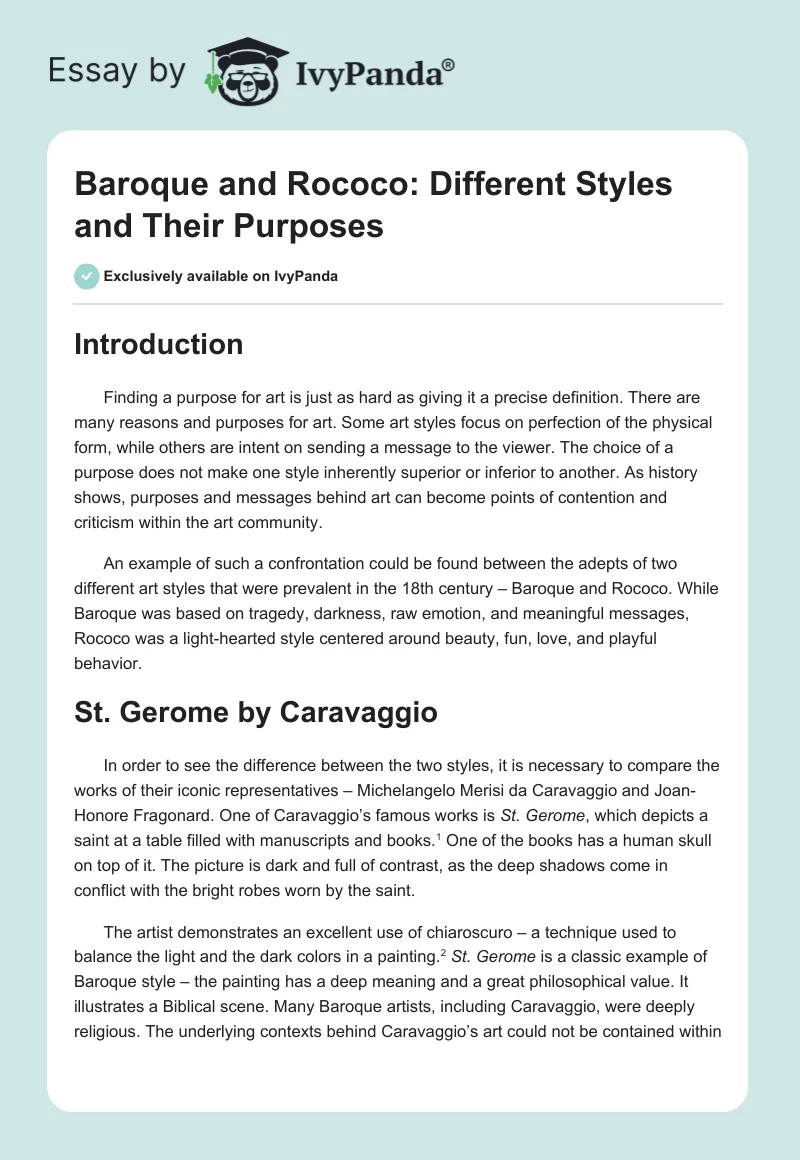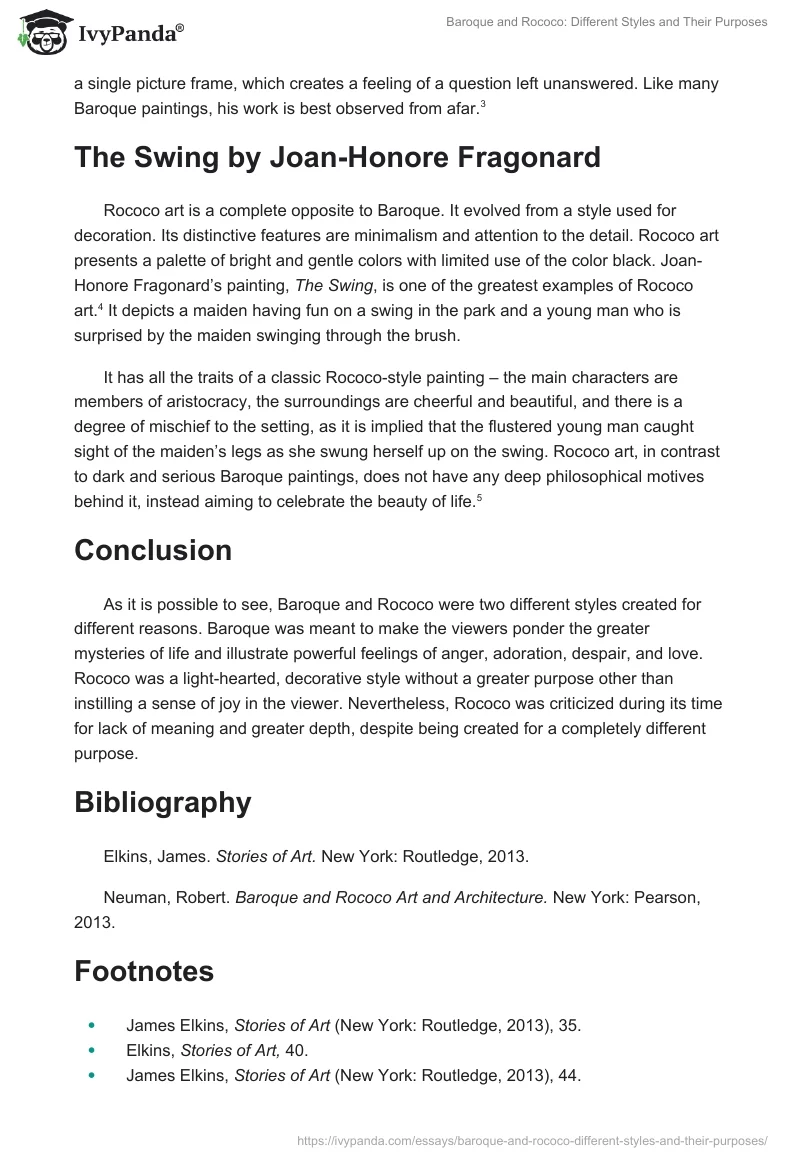Introduction
Finding a purpose for art is just as hard as giving it a precise definition. There are many reasons and purposes for art. Some art styles focus on perfection of the physical form, while others are intent on sending a message to the viewer. The choice of a purpose does not make one style inherently superior or inferior to another. As history shows, purposes and messages behind art can become points of contention and criticism within the art community.
An example of such a confrontation could be found between the adepts of two different art styles that were prevalent in the 18th century – Baroque and Rococo. While Baroque was based on tragedy, darkness, raw emotion, and meaningful messages, Rococo was a light-hearted style centered around beauty, fun, love, and playful behavior.
St. Gerome by Caravaggio
In order to see the difference between the two styles, it is necessary to compare the works of their iconic representatives – Michelangelo Merisi da Caravaggio and Joan-Honore Fragonard. One of Caravaggio’s famous works is St. Gerome, which depicts a saint at a table filled with manuscripts and books. One of the books has a human skull on top of it. The picture is dark and full of contrast, as the deep shadows come in conflict with the bright robes worn by the saint.
The artist demonstrates an excellent use of chiaroscuro – a technique used to balance the light and the dark colors in a painting. St. Gerome is a classic example of Baroque style – the painting has a deep meaning and a great philosophical value. It illustrates a Biblical scene. Many Baroque artists, including Caravaggio, were deeply religious. The underlying contexts behind Caravaggio’s art could not be contained within a single picture frame, which creates a feeling of a question left unanswered. Like many Baroque paintings, his work is best observed from afar.
The Swing by Joan-Honore Fragonard
Rococo art is a complete opposite to Baroque. It evolved from a style used for decoration. Its distinctive features are minimalism and attention to the detail. Rococo art presents a palette of bright and gentle colors with limited use of the color black. Joan-Honore Fragonard’s painting, The Swing, is one of the greatest examples of Rococo art. It depicts a maiden having fun on a swing in the park and a young man who is surprised by the maiden swinging through the brush.
It has all the traits of a classic Rococo-style painting – the main characters are members of aristocracy, the surroundings are cheerful and beautiful, and there is a degree of mischief to the setting, as it is implied that the flustered young man caught sight of the maiden’s legs as she swung herself up on the swing. Rococo art, in contrast to dark and serious Baroque paintings, does not have any deep philosophical motives behind it, instead aiming to celebrate the beauty of life.
Conclusion
As it is possible to see, Baroque and Rococo were two different styles created for different reasons. Baroque was meant to make the viewers ponder the greater mysteries of life and illustrate powerful feelings of anger, adoration, despair, and love. Rococo was a light-hearted, decorative style without a greater purpose other than instilling a sense of joy in the viewer. Nevertheless, Rococo was criticized during its time for lack of meaning and greater depth, despite being created for a completely different purpose.
Bibliography
Elkins, James. Stories of Art. New York: Routledge, 2013.
Neuman, Robert. Baroque and Rococo Art and Architecture. New York: Pearson, 2013.


